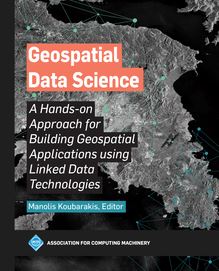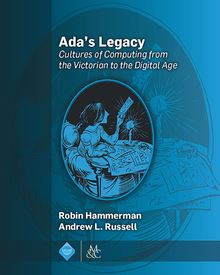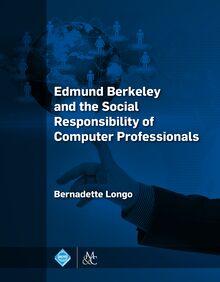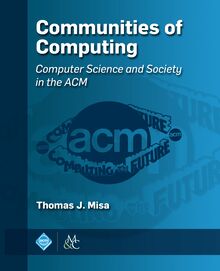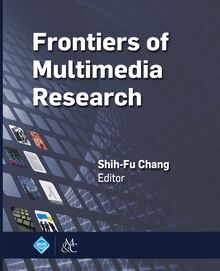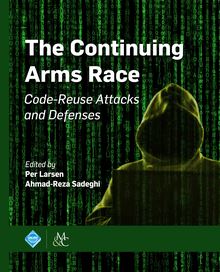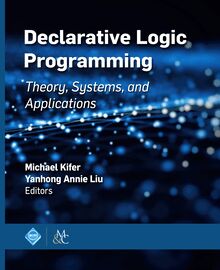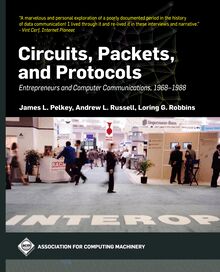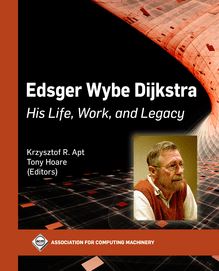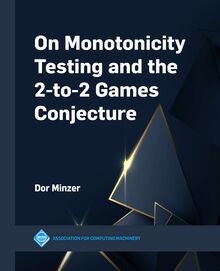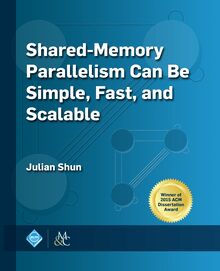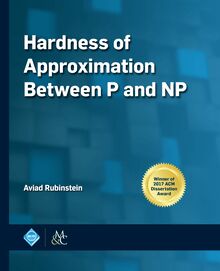-
 Univers
Univers
-
 Ebooks
Ebooks
-
 Livres audio
Livres audio
-
 Presse
Presse
-
 Podcasts
Podcasts
-
 BD
BD
-
 Documents
Documents
-
- Cours
- Révisions
- Ressources pédagogiques
- Sciences de l’éducation
- Manuels scolaires
- Langues
- Travaux de classe
- Annales de BEP
- Etudes supérieures
- Maternelle et primaire
- Fiches de lecture
- Orientation scolaire
- Méthodologie
- Corrigés de devoir
- Annales d’examens et concours
- Annales du bac
- Annales du brevet
- Rapports de stage
La lecture à portée de main
179 pages
English
Découvre YouScribe en t'inscrivant gratuitement
Je m'inscrisVerified Functional Programming in Agda , livre ebook
Découvre YouScribe en t'inscrivant gratuitement
Je m'inscris
Obtenez un accès à la bibliothèque pour le consulter en ligne
En savoir plus
En savoir plus
179 pages
English
Obtenez un accès à la bibliothèque pour le consulter en ligne
En savoir plus
En savoir plus

Description
Agda is an advanced programming language based on Type Theory. Agda's type system is expressive enough to support full functional verification of programs, in two styles. In external verification, we write pure functional programs and then write proofs of properties about them. The proofs are separate external artifacts, typically using structural induction. In internal verification, we specify properties of programs through rich types for the programs themselves. This often necessitates including proofs inside code, to show the type checker that the specified properties hold. The power to prove properties of programs in these two styles is a profound addition to the practice of programming, giving programmers the power to guarantee the absence of bugs, and thus improve the quality of software more than previously possible.
Verified Functional Programming in Agda is the first book to provide a systematic exposition of external and internal verification in Agda, suitable for undergraduate students of Computer Science. No familiarity with functional programming or computer-checked proofs is presupposed.
The book begins with an introduction to functional programming through familiar examples like booleans, natural numbers, and lists, and techniques for external verification. Internal verification is considered through the examples of vectors, binary search trees, and Braun trees. More advanced material on type-level computation, explicit reasoning about termination, and normalization by evaluation is also included. The book also includes a medium-sized case study on Huffman encoding and decoding.
Verified Functional Programming in Agda is the first book to provide a systematic exposition of external and internal verification in Agda, suitable for undergraduate students of Computer Science. No familiarity with functional programming or computer-checked proofs is presupposed.
The book begins with an introduction to functional programming through familiar examples like booleans, natural numbers, and lists, and techniques for external verification. Internal verification is considered through the examples of vectors, binary search trees, and Braun trees. More advanced material on type-level computation, explicit reasoning about termination, and normalization by evaluation is also included. The book also includes a medium-sized case study on Huffman encoding and decoding.
Sujets
Informations
| Publié par | Association for Computing Machinery and Morgan & Claypool Publishers |
| Date de parution | 01 février 2016 |
| Nombre de lectures | 0 |
| EAN13 | 9781970001266 |
| Langue | English |
| Poids de l'ouvrage | 2 Mo |
Informations légales : prix de location à la page 0,3200€. Cette information est donnée uniquement à titre indicatif conformément à la législation en vigueur.
Extrait
Verified Functional Programming in Agda
ACM Books
Editor in Chief M. Tamer Özsu,University of Waterloo
ACM Books is a new series of high-quality books for the computer science community, published by ACM in collaboration with Morgan & Claypool Publishers. ACM Books publications are widely distributed in both print and digital formats through booksellers and to libraries (and library consortia and individual ACM members via the ACM Digital Library platform.
Verified Functional Programming in Agda Aaron Stump,The University of Iowa 2016
The VR Book: Human-Centered Design for Virtual Reality Jason Jerald,NextGen Interactions 2016
Ada’s Legacy Robin Hammerman,Stevens Institute of Technology;L. Russell, Andrew Stevens Institute of Technology 2016
Edmund Berkeley and the Social Responsibility of Computer Professionals Bernadette Longo,New Jersey Institute of Technology 2015
Candidate Multilinear Maps Sanjam Garg,University of California, Berkeley 2015
Smarter than Their Machines: Oral Histories of Pioneers in Interactive Computing John Cullinane,Northeastern University; Mossavar-Rahmani Center for Business and Government, John F. Kennedy School of Government, Harvard University 2015
A Framework for Scientific Discovery through Video Games Seth Cooper,University of Washington 2014
Trust Extension as a Mechanism for Secure Code Execution on Commodity Computers Bryan Jeffrey Parno,Microsoft Research 2014
Embracing Interference in Wireless Systems Shyamnath Gollakota,University of Washington 2014
Verified Functional Programming in Agda
Copyright © 2016 by the Association for Computing Machinery and Morgan & Claypool Publishers
All rights reserved. No part of this publication may be reproduced, stored in a retrieval system, or transmitted in any form or by any means—electronic, mechanical, photocopy, recording, or any other except for brief quotations in printed reviews—without the prior permission of the publisher.
Designations used by companies to distinguish their products are often claimed as trademarks or registered trademarks. In all instances in which Morgan & Claypool is aware of a claim, the product names appear in initial capital or all capital letters. Readers, however, should contact the appropriate companies for more complete information regarding trademarks and registration.
Verified Functional Programming in Agda Aaron Stump books.acm.org www.morganclaypool.com
ISBN: 978-1-97000-127-3 hardcover ISBN: 978-1-97000-124-2 paperback ISBN: 978-1-97000-125-9 ebook ISBN: 978-1-97000-126-6 ePub Series ISSN: 2374-6769 print 2374-6777 electronic
DOIs:
10.1145/2841316Book 10.1145/2841316.2841317 10.1145/2841316.2841318 10.1145/2841316.2841319 10.1145/2841316.2841320 10.1145/2841316.2841321 10.1145/2841316.2841322 10.1145/2841316.2841323 10.1145/2841316.2841324 10.1145/2841316.2841325 10.1145/2841316.2841326 10.1145/2841316.2841327 10.1145/2841316.2841328 10.1145/2841316.2841329
Preface Chapter 1 Chapter 2 Chapter 3 Chapter 4 Chapter 5 Chapter 6 Chapter 7 Chapter 8 Chapter 9 Chapter 10 Appendixes References/Index
A publication in the ACM Books series, #9 Editor in Chief: M. Tamer Özsu,University of Waterloo Area Editor: Laurie Hendren,McGill University
First Edition
10 9 8 7 6 5 4 3 2 1
For Madeliene and Seraphina
Chapter 1
Chapter 2
Chapter 3
Chapter 4
Chapter 5
Chapter 6
Contents
Preface
Functional Programming with the Booleans
1.1 1.2 1.3 1.4 1.5 1.6 1.7
Declaring the Datatype of Booleans First Steps Interacting with Agda Syntax Declarations Defining Boolean Operations by Pattern Matching: Ne gation Defining Boolean Operations by Pattern Matching: An d, Or The if-then-else Operation Conclusion Exercises
Introduction to Constructive Proof 2.1A First Theorem about the Booleans 2.2Universal Theorems 2.3Another Example, and More On Implicit Arguments 2.4Theorems with Hypotheses 2.5Going Deeper: Curry-Howard and Constructivity 2.6Further Examples 2.7Conclusion Exercises
Natural Numbers 3.1Peano Natural Numbers 3.2Addition 3.3Multiplication 3.4Arithmetic Comparison 3.5Even/Odd and Mutually Recursive Definitions 3.6Conclusion Exercises
Lists 4.1 4.2 4.3 4.4
The List Datatype and Type Parameters Basic Operations on Lists Reasoning about List Operations Conclusion Exercises
Internal Verification 5.1Vectors 5.2Binary Search Trees 5.3Sigma Types 5.4Braun Trees 5.5Discussion: Internal vs. External Verification 5.6Conclusion Exercises
Type-Level Computation 6.1Integers 6.2Formatted Printing
Chapter 7
Chapter 8
Chapter 9
Chapter 10
Appendix A
Appendix B
Appendix C
6.3 6.4
Proof by Reflection Conclusion Exercises
Generating Agda Parsers with gratr
7.1 7.2 7.3
A Primer on Grammars Generating Parsers with gratr Conclusion Exercises
A Case Study: Huffman Encoding and Decoding
8.1 8.2 8.3 8.4 8.5
The Files The Input Formats Encoding Textual Input Decoding Encoded Text Conclusion Exercises
Reasoning About Termination
9.1 9.2 9.3
Termination Proofs Operational Semantics for SK Combinators Conclusion Exercises
Intuitionistic Logic and Kripke Semantics
10.1 10.2 10.3 10.4 10.5 10.6
Positive Propositional Intuitionistic Logic (PPIL) Kripke Structures Kripke Semantics for PPIL Soundness of PPIL Completeness Conclusion Exercises
Quick Guide to Symbols
Commonly Used Emacs Control Commands
Some Extra Emacs Definitions
References Index Author’s Biography
Preface
Programming languages are one of the absolutely ess ential parts of Computer Science. Without them, programmers could not express their i deas about how to process information in all the amazing and intricate ways n ecessary to support the continuing explosion of applications for computing in the 21st century. Most students of Computer Science, certainly in the U.S., start learning a pr ogramming language right at the beginning of their studies. We may go on to learn a nalysis of sophisticated algorithms and data structures, graphics, operating systems, d atabases, network protocols, robotics, and many other topics, but programming la nguages are the practical starting point for Computer Science. Programming is an intellectually challenging task, and creating high-quality programs that do what they are supposed to do, and that can be maintained and adapted over time, is very difficult. In this book, we will focus on how to write programs that work as desired. We will not be concerned with maintainability and adaptability directly (though of course, these topics cannot be totally ignored when writing any significant piece of software). The state of the ar t for achieving correct software for most industrial programming at major corporations i s testing. Unit testing, system testing, regression suites—these are powerful and e ffective tools for rooting out bugs and thus ensuring software quality. But they are li mited. A famous aphorism by Turing award winner Edsger Dijkstra is that “Program testi ng can be used to show the presence of bugs, but never to show their absence!” [1972]. For there is only a finite number of tests you can run, but in practice, the n umber of possible inputs or system configurations that should be tested is infinite (t echnically, modern computers only have finitely many states since they have only fini te memories, but the number is beyond astronomical, and should be considered infin ite for practical purposes).
Verified Programming This book is about a new way to program, where inst ead of just testing programs on a finite number of inputs, we write mathematical proo fs that demonstrate their correctness on all possible inputs. These proofs ar e written with a specific syntax, in the programming language itself. The compiler check s those proofs when it type-checks and compiles the code. If all the proofs are correct, then we can be sure that our program really does satisfy the property we hav e proved it has. Testing can still be an important way of assuring code quality, because writing proofs is hard, and often it may be more practical just to do some testing. But we have now a new tool that we can use in our quest to build high-quality software: we canverify software correctness by writing mathematical proofs about it. While these ideas have been known in the Programmin g Languages and Verification research communities for many decades, it has prove n difficult to design languages and tools that really make this vision of verified programming a feasible reality. In the past 10–15 years, however, this has changed. New la nguages and tools, building on new research results in programming language theory and new insights into the design of effective languages for verified programming, ha ve made it realistic, for the first time in the history of programming, to prove properties of interesting programs in reasonably general-purpose programming languages, without a Ph D in logic and without a huge and tedious engineering investment.
Agda In this book, we will learn how to write verified p rograms using one such advanced programming language called Agda. Agda is a researc h language developed over a
number of years at Chalmers University of Technolog y in Gothenburg, Sweden. The current version, Agda 2, was designed and implement ed by Ulf Norell as part of his doctoral dissertation [Norell 2007]. Since then, it has been improved and developed further by a long list of authors, including (from the Agda package information):
Ulf Norell, Nils Anders Danielsson, Andreas Abel, Makoto Takeyama, Catarina Coquand, with contributions by Stevan Andjelkovic, Marcin Benke, Jean-Philippe Bernardy, James Chapman, Dominique Devriese, Peter Divanski, Fredrik Nordvall Forsberg, Olle Frediksson, Daniel Gustafsson, Alan Jeffrey, Fredrik Lindblad, Guilhem Moulin, Nicolas Pouillard, Andrés Sicard-Ramírez and many more.
The basic mode for working with Agda is to use the EMACS text editor as a rudimentary Integrated Development Environment (IDE ). Text is entered into a buffer in EMACS, and then with commands like Ctrl+c Ctrl+l (typed in sequence), the text in that buffer is sent to Agda for type checking and proof checking. An amazing feature of Agda and its EMACS editing mode is that they support Unicode characte rs. So rather than just using alphanumeric characters and basic p unctuation, you can use a much larger character set. Unicode supports almost 110,0 00 characters. Usually, we write programs using basic Latin characters, like those s hown in Figure1.
Figure 1
Basic Latin characters.
-
 Univers
Univers
-
 Ebooks
Ebooks
-
 Livres audio
Livres audio
-
 Presse
Presse
-
 Podcasts
Podcasts
-
 BD
BD
-
 Documents
Documents
-
Jeunesse
-
Littérature
-
Ressources professionnelles
-
Santé et bien-être
-
Savoirs
-
Education
-
Loisirs et hobbies
-
Art, musique et cinéma
-
Actualité et débat de société
-
Jeunesse
-
Littérature
-
Ressources professionnelles
-
Santé et bien-être
-
Savoirs
-
Education
-
Loisirs et hobbies
-
Art, musique et cinéma
-
Actualité et débat de société
-
Actualités
-
Lifestyle
-
Presse jeunesse
-
Presse professionnelle
-
Pratique
-
Presse sportive
-
Presse internationale
-
Culture & Médias
-
Action et Aventures
-
Science-fiction et Fantasy
-
Société
-
Jeunesse
-
Littérature
-
Ressources professionnelles
-
Santé et bien-être
-
Savoirs
-
Education
-
Loisirs et hobbies
-
Art, musique et cinéma
-
Actualité et débat de société
- Cours
- Révisions
- Ressources pédagogiques
- Sciences de l’éducation
- Manuels scolaires
- Langues
- Travaux de classe
- Annales de BEP
- Etudes supérieures
- Maternelle et primaire
- Fiches de lecture
- Orientation scolaire
- Méthodologie
- Corrigés de devoir
- Annales d’examens et concours
- Annales du bac
- Annales du brevet
- Rapports de stage
Signaler un problème
YouScribe
Le catalogue
Le service
© 2010-2024 YouScribe
